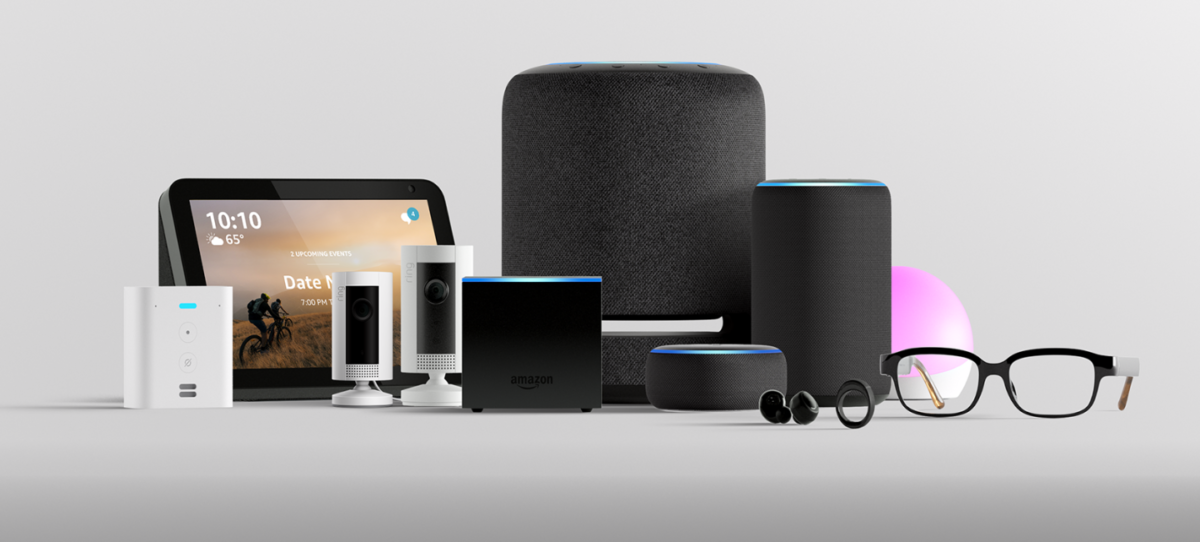Last week, Amazon has introduced an astonishing amount of new hardware onto the market, further expanding the amazon IoT ecosystem. For instance, the speech assistant Alexa is now available on a speaker with a screen (Echo Show 8), on a pair of glasses (Echo frames), on wireless headphones (Echo buds), in a microwave (Amazon Smart Oven) and even as a finger ring (Echo loop). Moreover, Amazon has launched an Alexa-enabled light (Echo glow), home cameras which can be integrated with a doorbell (ring cam) and a dog tag (Ring fetch) (Perez, 2019).The Echo frames and the Echo loop will initially only be launched on the market in small quantities. “If the customers love them, we will increase the use and build even more,” says a blog entry of the company (Amazon, 2019). However, Amazon’s product trials are more than just a taste test. The company has more or less invented the market for language assistants and is now seeking to retain power and occupy much of the market.

Amazon Ring Fetch

Amazon smart oven
Currently, the language assistant is a type of remote control to a convenient way to play music, see the weather or set the alarm, but the customer benefit of Alexa has been very limited so far. And looking at the price for the newly launched devices also reveals that Amazon is not looking to directly generate revenue from hardware sales. In fact, Amazon is a shopping platform and the hardware is a means to drive sales on the website. The devices with voice control are something like the entrance door to the supermarket, the department store and the specialist shop in one. Amazon wants to dominate distribution. The only crucial question is: Why isn’t voice shopping working properly yet? And what can Amazon do to change this? The numerous new products suggest that Amazon itself has no answer to this question.
So why is Amazon implementing a costly experiment which might not even yield the expected outcome? The answer lies within the data about customer spending habits that Amazon is will be able to collect and analyze. In order to optimize marketing in the future, it is key to offer products and service timely, contextually, conveniently and easy to consume. Ultimately, smart devices will allow the firm to integrate seemlessly into people’s everyday lives and habits. Interestingly, Amazon emphasised that customers can delete individual records and will provide a function for Alexa devices that will automatically delete records after three or 18 months. (Holzki, 2019). If orders remain absent, it might also be due to the fact that the ring is not exactly a piece of jewellery. Only true evangelists of the amazon ecosystem might be willing to put the chunky piece of plastic to their finger. However, the company’s proven strategy is to try it out, experiment to see what works – and then invest in developing the right products.
What do you think about Amazon’s aggressive strategy in the home device market and will the firm be able to generate a competitive advantage over Google’s Nest and Apple’s Home Pod by flooding the market with new products? Are you an early adopter of innovative beta products or do you prefer to wait until the devices have matured?
Amazon (2019) Retrived from: https://blog.aboutamazon.com/devices/amazon-devices-event-september-2019
Holzki, L. (2019, September 26th) Hauptsache es spricht, warum Alexa noch kein Geschäftsmodell ist. Handelblatt. Retrived from: https://www.handelsblatt.com/meinung/kommentare/kommentar-hauptsache-es-spricht-warum-alexa-noch-kein-geschaeft-ist/25055992.html
Perez, S. (2019, September 26th) Everything Amazon announced at its Alexa event. TechCrunch. Retrived from: https://techcrunch.com/2019/09/25/everything-amazon-announced-at-its-alexa-event-today/


